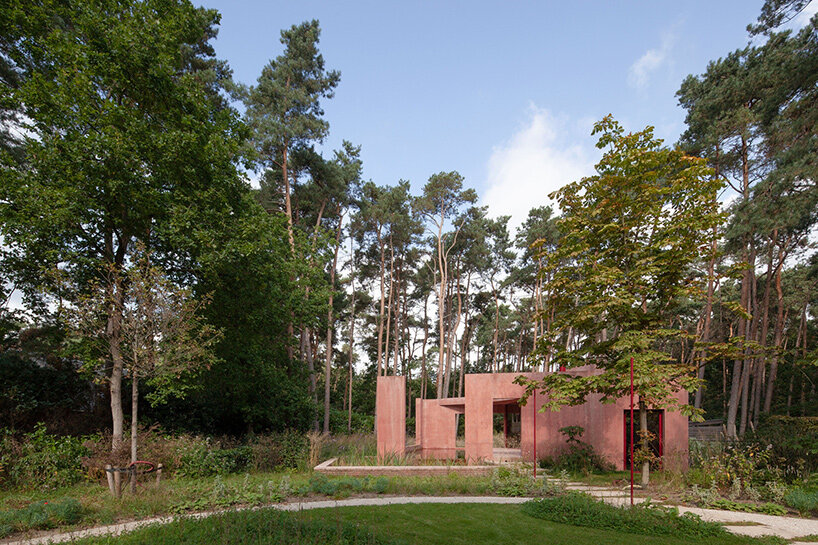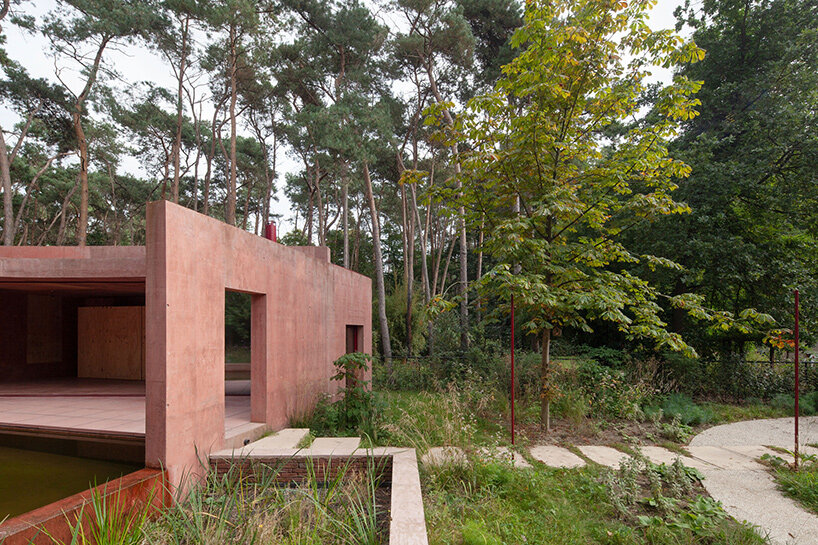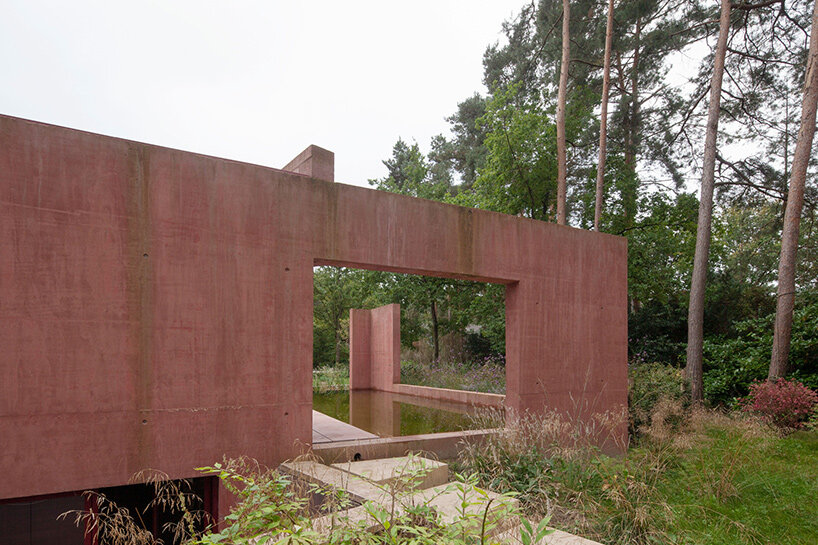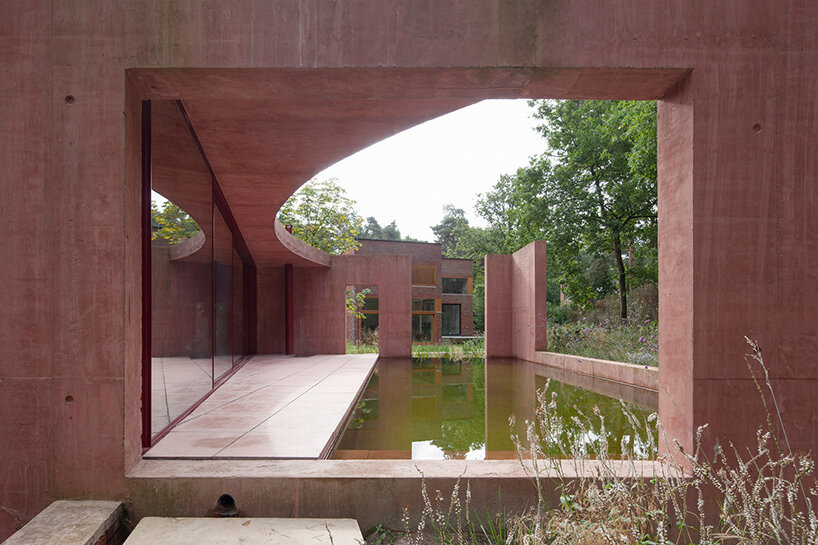nwlnd architects creates tension between old and new
Emerging from its forested site in Bonheiden, BelgiumNWLND Architects’ Refuge is a composition of frames built of red concrete. The compact building occupies the wooded garden of a pre-existing villa, whose traditional materiality of red brick informed the defining red pigments of the new architecture.
Meanwhile, the rotated orientation of the Refuge follows the orthogonal order of the house along with the angle of the site’s boundaries, lending a compositional tension between the new, the old, and the previously unkept garden. The architects wrote: ‘It is a concrete container with precise openings that frame the landscape.’
 images © Johnny Umans | @johnnyumans
images © Johnny Umans | @johnnyumans
refuge: an enclosed garden in the woods
Led by Bert Rogiers and Pieter Vandeputte, the design team at NWLND Architects programs its Refuge with a filtered swimming pond, bicycle shed, and storage room. The pavilion also hosts a kitchen and a small bathroom. These spaces are held together by a circular arch overhead, while gardened nature is allowed to grow among the walls to integrate the architecture with the wooded area. The walls and curving roof plate together create a ‘hortus conclusus,’ or enclosed garden, which suggests an abstraction of a forest clearing. The group explains: ‘Every frame that arises throughout the space engages in a dialogue with the existing house and nature.’

geometric and material simplicity
NWLND Architects prioritizes simplicity in the layout, geometries, and materiality of its Refuge. Maintaining an uninterrupted expression, all metal elements have the same reddish color as the joinery, blending into the pigmented concrete. The architects hope that the built space ‘can be experienced as a sculpted space that frames the landscape as well as a functional space that can be used all year round to relax, work, or cook and eat with family and friends.’
By framing the natural context with its pinkish-red hues, the architecture provides a soft contrast with its green surroundings. A large sliding window directly faces the house, which the team intends to ‘divide the pavilion into a hard exterior and a soft, isolated interior.’


